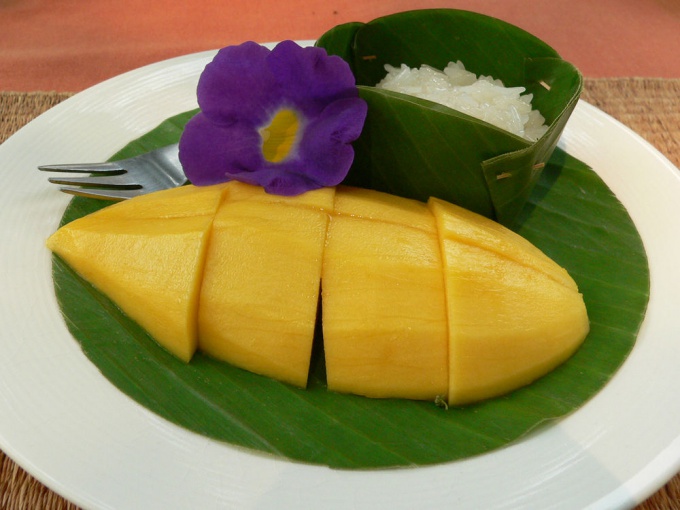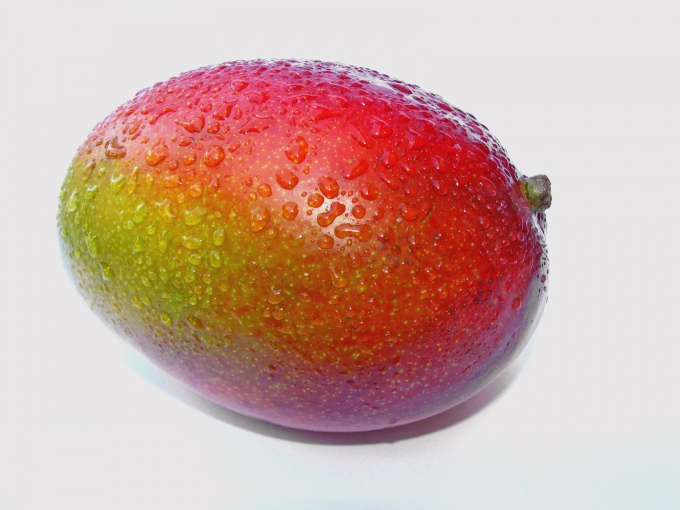Instruction
1
Take the mango in your hand, hold it to his nose and pull in the flavor. It must be sweet, rich, fruity. Mango has no smell, when it is not yet ripe. If the fruit smells alcohol, or has a sour fragrance of fermentation, it is too ripe and probably began to deteriorate.
2
Gently squeeze the mango in his hands. The skin should be elastic, not too soft and pliable. If mango does not compress it, leave it to ripen for several days at room temperature.
3
Inspect the shape of the fruit. If it looks hard and dense, so mango is not yet ripe. If the fruit is rounded, smooth and not wrinkled nor from one end, then you can eat it. A few brown spots is a normal characteristic of the ripe fruit, but the skin should be smooth, without cracks and damage.
4
Ripe mango has a fairly soft, juicy, smooth flesh that tastes like a ripe peach. Basically, eating is not ripe mangoes is problematic, because the hard fruit, it's hard to cut with a knife, and even more so to chew.

Note
The use of more than two unripe fruits a day can cause increased flatulence, irritation of the gastrointestinal tract and inflammation of the throat. Also overeating of ripe fruit mango can cause intestinal upset, constipation and allergies.
Useful advice
To mango faster ripe, place the fruit in a paper bag with an Apple, banana or another mango. The process will accelerate through sharing with others the fruit substance ethylene;
Leave the mango at room temperature until its consistency becomes soft, but not spongy to the touch;
Unripe mangoes should not be put in the refrigerator. The cool temperature slows the ripening;
Do not store ripe mangoes in the refrigerator for more than a week;
Mangoes are great for making fruit or vegetable salads, and meat dishes.
Leave the mango at room temperature until its consistency becomes soft, but not spongy to the touch;
Unripe mangoes should not be put in the refrigerator. The cool temperature slows the ripening;
Do not store ripe mangoes in the refrigerator for more than a week;
Mangoes are great for making fruit or vegetable salads, and meat dishes.
